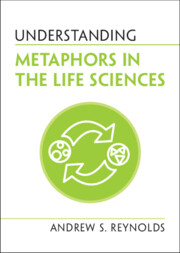Book contents
- Understanding Metaphors in the Life Sciences
- Series page
- Understanding Metaphors in the Life Sciences
- Copyright page
- Additional material
- Dedication
- Contents
- Foreword
- Preface
- Acknowledgements
- 1 Metaphors and Science
- 2 Background Metaphors
- 3 Genes and Genomes
- 4 Proteins
- 5 Cells
- 6 Evolution
- 7 Ecology
- 8 Biomedicine
- Concluding Remarks
- Summary of Common Misunderstandings
- References
- Index
5 - Cells
Factories, Computers, and Social Organisms
Published online by Cambridge University Press: 11 April 2022
- Understanding Metaphors in the Life Sciences
- Series page
- Understanding Metaphors in the Life Sciences
- Copyright page
- Additional material
- Dedication
- Contents
- Foreword
- Preface
- Acknowledgements
- 1 Metaphors and Science
- 2 Background Metaphors
- 3 Genes and Genomes
- 4 Proteins
- 5 Cells
- 6 Evolution
- 7 Ecology
- 8 Biomedicine
- Concluding Remarks
- Summary of Common Misunderstandings
- References
- Index
Summary
We have talked about genes and proteins and the various metaphors used to describe what they are, and how they function and interact with one another in the context of the cellular environment. Now it is time to look at the cell itself – the fundamental unit of life, the minimal system to which the property of being alive can be ascribed. While DNA and proteins are complex molecules with the capacity for chemical activity that is vital for life, neither of them can be said to be living. Nor can any other component found beneath the level of the cell as a whole: not amino acids (the components of protein), not polysaccharides (the large chains of sugars of which starch, cellulose, and chitin are composed), not water (which makes up more than 70 percent of the cell by content), not lipids (the fatty molecules that make up the membranes that surround the cell and many of its internal organelles), nor the organelles that carry out specific tasks within the cell.
- Type
- Chapter
- Information
- Understanding Metaphors in the Life Sciences , pp. 67 - 87Publisher: Cambridge University PressPrint publication year: 2022

